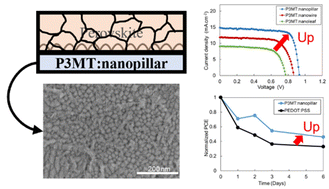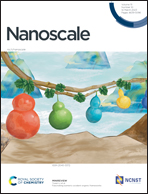Performance and stability improvement of perovskite solar cells using a nanopillar conductive polymer formed via electropolymerisation†
Abstract
BF4−-doped poly(3-methylthiophene) (P3MT) was formed using electropolymerisation as a hole transport material for inverted perovskite solar cells. The controlled nanopillar morphology of P3MT enables void-less uniform perovskite formation and exhibits conversion efficiency of 11.11%. The P3MT-based cells exhibited superior stability in ambient air to poly(3,4-ethylenedioxythiophene):poly(styrene sulfonic acid)-based cells.



 Please wait while we load your content...
Please wait while we load your content...